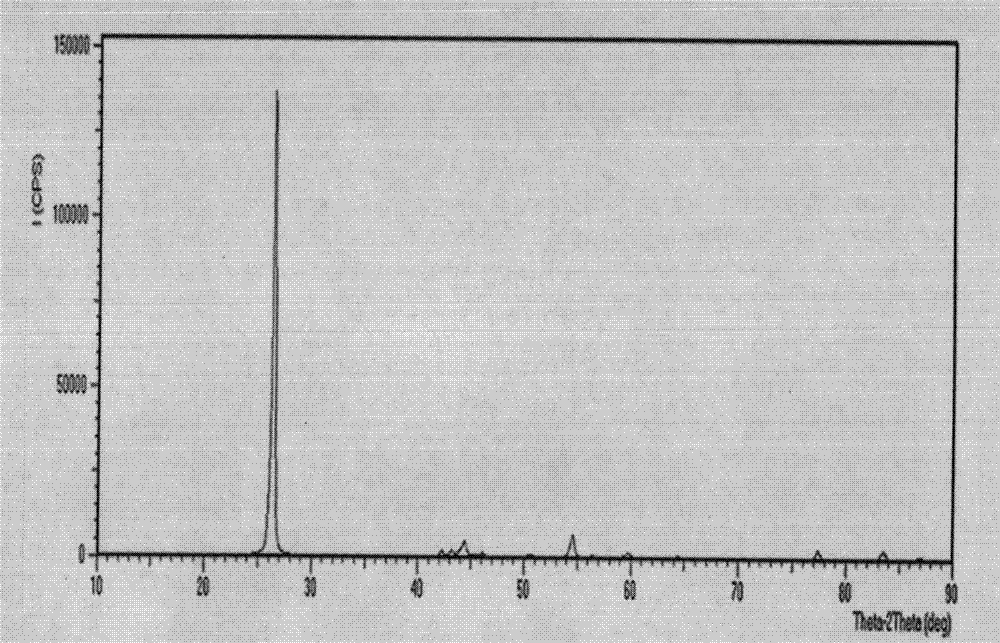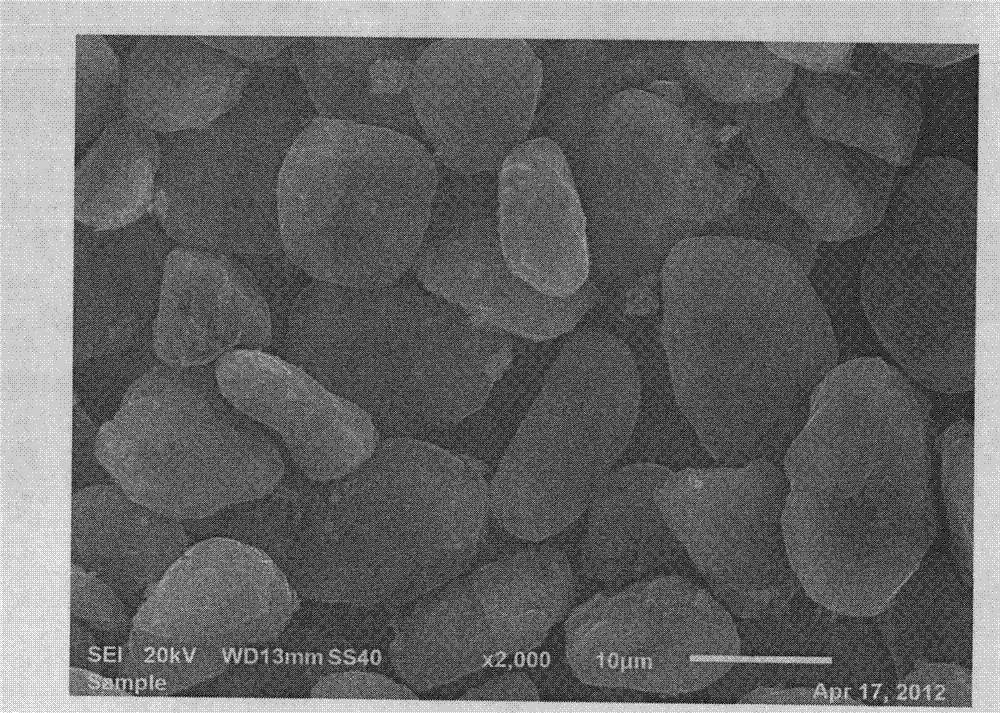Carbon anode material for lithium ion battery and preparation method for carbon anode material
A technology of carbon negative electrode materials and lithium-ion batteries, which is applied in the field of materials science, can solve the problems of poor high-current charge and discharge performance, material pulverization, difficult core-shell structure, etc., and achieve low irreversible specific capacity and good charge and discharge performance. Good, good cycle stability
- Summary
- Abstract
- Description
- Claims
- Application Information
AI Technical Summary
Problems solved by technology
Method used
Image
Examples
Embodiment 1
[0016] The raw material formula is as follows:
[0017] Natural graphite: 100.0g (spherical graphite, battery grade), the average particle size is 6-30μm, and the interlayer distance is d 002 0.3353~0.3354nm; organic pyrolytic carbon raw material: 4.0g petroleum pitch with a softening point of 110°C, high purity;
[0018] Solvent: 90.0g industrial grade naphthalene; carbon nanotube: 5g (battery grade, slurry, oil system 20% concentration), average diameter is 30-100nm, average length is 80-400nm,
[0019] The preparation method is as follows:
[0020] (1) Take naphthalene crystals, put them into a special sealed stainless steel beaker, heat and stir in a heat-conducting silicone oil bath at 140°C, and after it dissolves, add petroleum pitch with a high softening point, stir at 300r / min to disperse and dissolve for 5min, and then add carbon nano tube, stir and disperse for 5 minutes;
[0021] (2) Add natural graphite powder, stir and disperse for 2h;
[0022] (3) Warming up...
Embodiment 2
[0026] The difference from Example 1 is: "10.0 g of petroleum pitch with a softening point of 110° C." is used instead of "4.0 g of petroleum pitch with a softening point of 110° C.".
[0027] Other steps are with embodiment 1. The carbon negative electrode material obtained at last is denoted as A2.
Embodiment 3
[0029] The difference from Example 1 is: the first two steps of heating process in step (4) are raised from room temperature to 400°C at 5°C / min, and kept at 2h; then at 2°C / min to 600°C, kept 2h; then increase the temperature at 2°C / min to 850°C and hold the temperature for 3h" to "3°C / min heating rate from room temperature to 800°C, and keep at 800°C for 5h".
[0030] Other steps are with embodiment 1. The final carbon negative electrode material is denoted as A3.
PUM
| Property | Measurement | Unit |
|---|---|---|
| The average particle size | aaaaa | aaaaa |
| Layer spacing | aaaaa | aaaaa |
| The average diameter | aaaaa | aaaaa |
Abstract
Description
Claims
Application Information
 Login to View More
Login to View More - R&D
- Intellectual Property
- Life Sciences
- Materials
- Tech Scout
- Unparalleled Data Quality
- Higher Quality Content
- 60% Fewer Hallucinations
Browse by: Latest US Patents, China's latest patents, Technical Efficacy Thesaurus, Application Domain, Technology Topic, Popular Technical Reports.
© 2025 PatSnap. All rights reserved.Legal|Privacy policy|Modern Slavery Act Transparency Statement|Sitemap|About US| Contact US: help@patsnap.com



